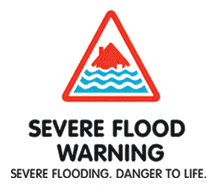After heavy flooding In 2015, Lord Deben, Chairman of the Committee on Climate Change, warned that “climate change is expected to increase the frequency and magnitude of severe flooding across the UK”.
Experts have predicted that if the average global temperature continues to rise, anticipated flood damage will double over the next century, with an additional one million homes in the UK being classified as “at risk” from flooding.
What’s more, our recent nationwide survey revealed that the majority of Brits have very little idea what to do in the event of a flood.
If you’re concerned about the increasing risk of flooding, one of the most vital steps to ensure you’re prepared is to put together a detailed flood plan.
What is a flood plan?
A flood plan is a document that contains all the information and contacts you might need in the eventuality of floods affecting your property, as well as listing all the necessary steps you need to take to protect your family and home.
Finding out that your property is in immediate danger of becoming flooded is obviously distressing for any homeowner, but being unsure about what action to take first will make the situation even more stressful.
By putting together a detailed flood plan ahead of time, you’ll gain the peace of mind of knowing precisely what to if your home is at risk from flooding, and which steps to prioritise over others. So what should your flood plan contain?
1. Contact list
This list should have the details of all the services you may need to contact during a flood, such as your gas, electricity and water suppliers, local council, insurance company and any local travel or weather information services.
One of the most important numbers to have recorded is Floodline, who you can call on 0345 988 1188 for updates on the situation in your area.
2. Key locations of utilities
If flood water is likely to enter your home, it’s imperative that you turn off your electricity, gas and water supplies as soon as possible. To make sure you know exactly where the access points for these utilities are, note them down on your flood plan so you can promptly turn them off.
3. Who can help/who can you help?
If you feel you might need any help during a flood, due to mobility issues for example, it’s important to have the contact details for someone nearby who can assist you.
Similarly, if any of your neighbours might experience difficulties evacuating their home, note their contact details here on your flood plan so you can check if they need any assistance.
4. Immediate action checklist
It’s useful to have a checklist of the most important things you can do as soon as you find out your home is at risk, such as:
- Put important documents out of flood risk and protect in polythene
- Move furniture and electrical items to safety
- Put any flood protection equipment in place
- Move your car out of the flood risk area
- Inform your family or friends that you may need to leave your home
- Identify who can help you/who you can help
- Identify what you will take with you if you need to evacuate your home
The Environment Agency has provided a blank template of a personal flood plan that you can use, simply print it out and fill out all the necessary details.

